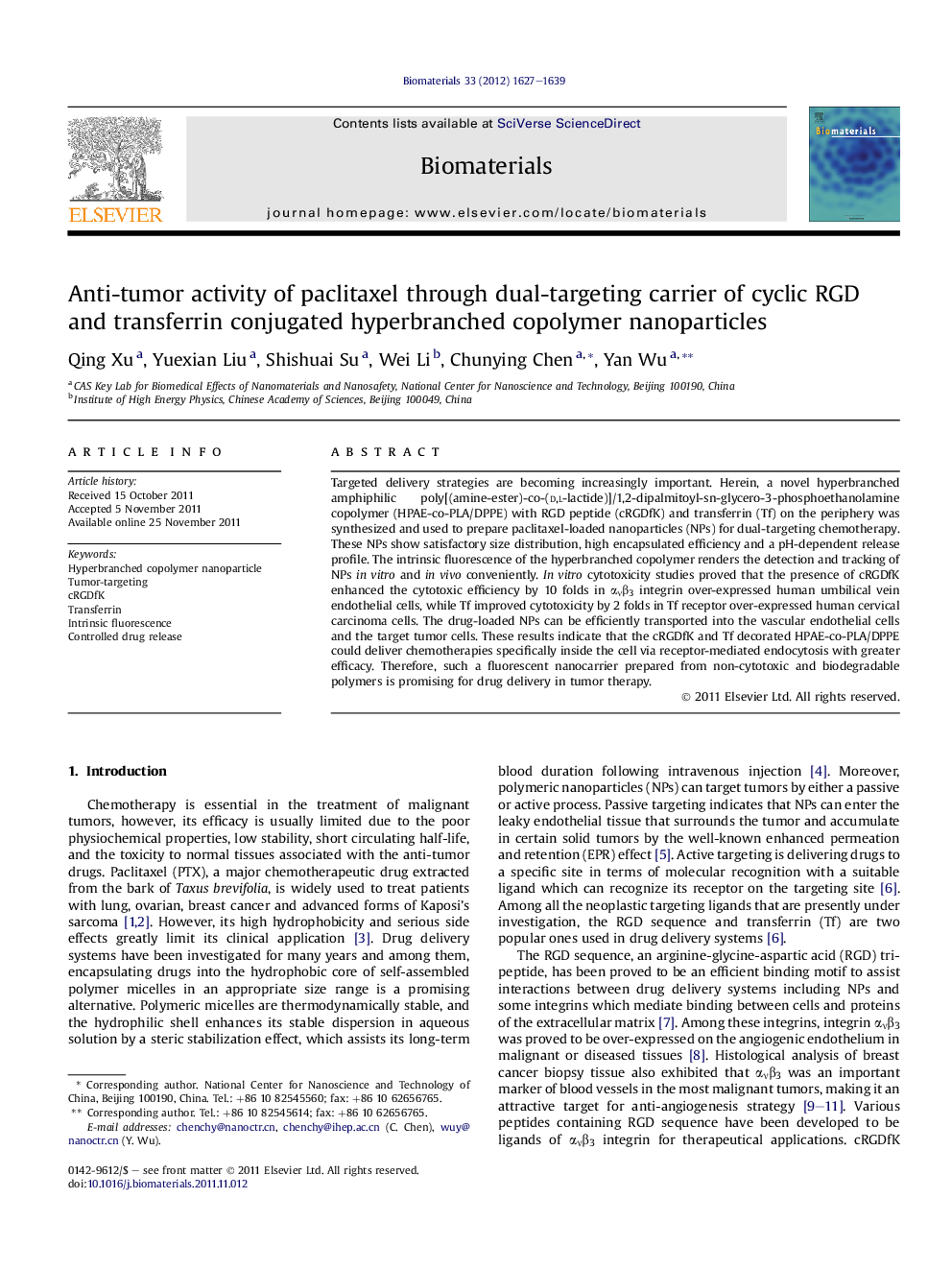| Article ID | Journal | Published Year | Pages | File Type |
|---|---|---|---|---|
| 10229865 | Biomaterials | 2012 | 13 Pages |
Abstract
Targeted delivery strategies are becoming increasingly important. Herein, a novel hyperbranched amphiphilic poly[(amine-ester)-co-(d,l-lactide)]/1,2-dipalmitoyl-sn-glycero-3-phosphoethanolamine copolymer (HPAE-co-PLA/DPPE) with RGD peptide (cRGDfK) and transferrin (Tf) on the periphery was synthesized and used to prepare paclitaxel-loaded nanoparticles (NPs) for dual-targeting chemotherapy. These NPs show satisfactory size distribution, high encapsulated efficiency and a pH-dependent release profile. The intrinsic fluorescence of the hyperbranched copolymer renders the detection and tracking of NPs in vitro and in vivo conveniently. In vitro cytotoxicity studies proved that the presence of cRGDfK enhanced the cytotoxic efficiency by 10 folds in ανβ3 integrin over-expressed human umbilical vein endothelial cells, while Tf improved cytotoxicity by 2 folds in Tf receptor over-expressed human cervical carcinoma cells. The drug-loaded NPs can be efficiently transported into the vascular endothelial cells and the target tumor cells. These results indicate that the cRGDfK and Tf decorated HPAE-co-PLA/DPPE could deliver chemotherapies specifically inside the cell via receptor-mediated endocytosis with greater efficacy. Therefore, such a fluorescent nanocarrier prepared from non-cytotoxic and biodegradable polymers is promising for drug delivery in tumor therapy.
Related Topics
Physical Sciences and Engineering
Chemical Engineering
Bioengineering
Authors
Qing Xu, Yuexian Liu, Shishuai Su, Wei Li, Chunying Chen, Yan Wu,
